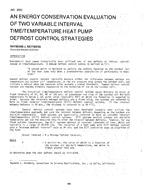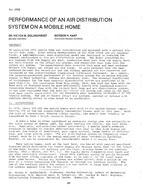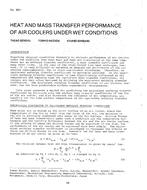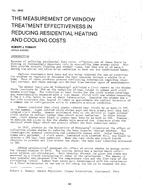-
-
Available Formats
- Options
- Availability
- Priced From ( in USD )
-
Available Formats
-
- Immediate download
-
$16.00Members pay $7.00
- Add to Cart
Customers Who Bought This Also Bought
-

CI-2663 -- An Energy Conservation Evaluation of Two Varia...
Priced From $16.00 -

CI-2652 -- Performance of an Air Distribution System on a...
Priced From $16.00 -

CI-2641 -- Heat and Mass Transfer Performance of Air Cool...
Priced From $16.00 -

CI-2648 -- The Measurement of Window Treatment Effectiven...
Priced From $16.00
About This Item
Full Description
Recent concern with energy consumption has accelerated the search for methods of preservation and shelf life extension of foods with the two-fold aim of reducing food waste and minimizing energy consumption. For the first time, alternative methods of shelf life extension, have been compared in respect to their quality retention and marketing (particularly energy) costs. Thus Rao (1) demonstrated that for some vegetables, total energy costs are not too different if the vegetables are puchased as raw, frozen, or canned. Major opportunities for energy cost reduction for the`raw vegetables appear to be in extending shelf life to avoid waste, and in preparation in the home. For the frozen vegetables, the major opportunity for saving appears to be in the retail distribution and home storage,,while the major opportunity for savings in the canned products appears to be in the design of, and materials for, the container.
While cost differences are not great, the advantage at this time is with frozen vegetables (1). Thus, if raw vegetables are to be more competitive, aids to refrigeration such as controlled atmosphere storage or preheating (blanching) might be used. A less expensive container could make the canned product more attractive, particularly if at the same time the canned vegetable quality can approach that of the fresh or frozen. The retortable pouch may be the sought answer for the sought fresh-like quality canned product. In fact, its proponents claim that the retortable pouch, while it may not as yet be less expensive than the conventional cylindrical can, is potentially less expensive and particularly less energy intensive, and will be so in the near future. Furthermore, it is claimed by Szczeblowski and Nebesky (2) that foods packed in the retortable pouch or in the related "Tray pack" are equal or better in quality to their raw prepared, or frozen equivalents. While this may be the case with certain pre-prepared, stew-type foods, there remains the question whether the retortable pouch provides a quality advantage over the conventional cylindrical can for products such as plain vegetables. It seems difficult to see any reason (other than lower container cost) for replacing a flexible container with a rigid one if the only advantage to be gained is having a thinner package to improve heat exchange. If this is the sole advantage, existing sardine cans should provide the same advantages as retortable pouches and would not suffer from flexibility.
The following studies were undertaken to determine first whether shelf life of raw vegetables could be extended substantially by blanching and packaging in reduced oxygen, and secondly to determine whether these same vegetables could be canned and retain superior quality if heat processed minimally--equivalent to the heat process required for retortable pouches.





